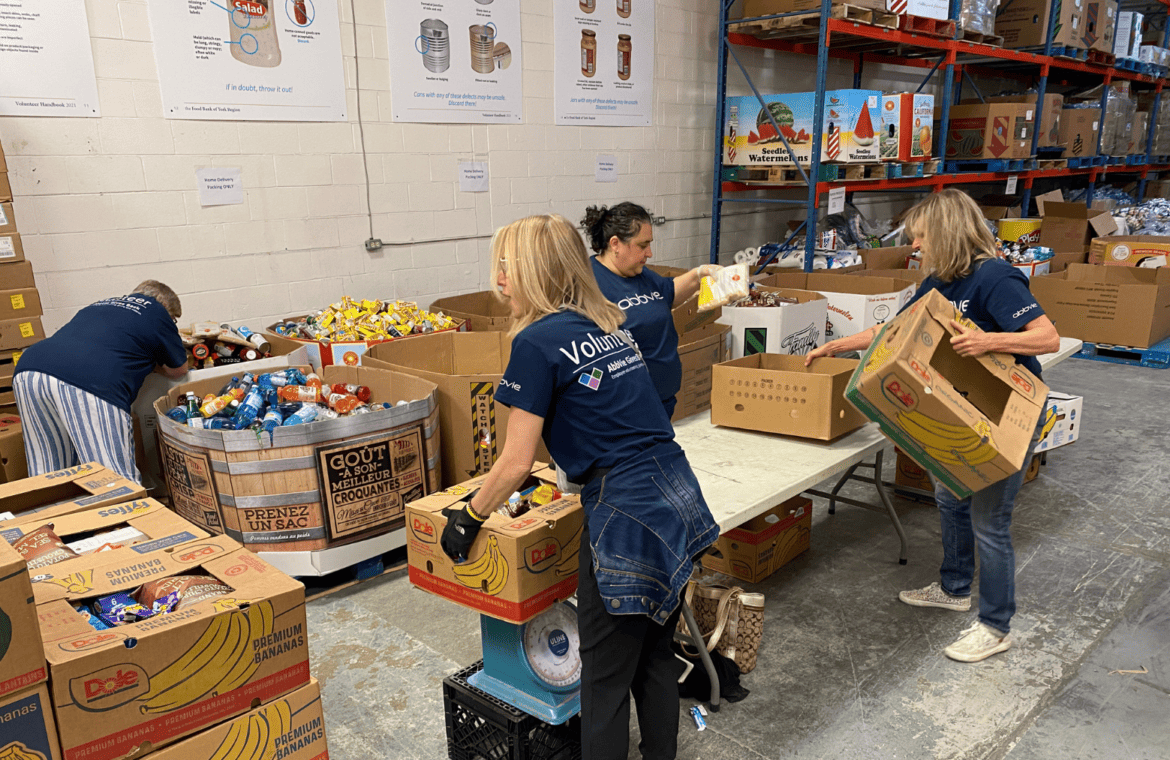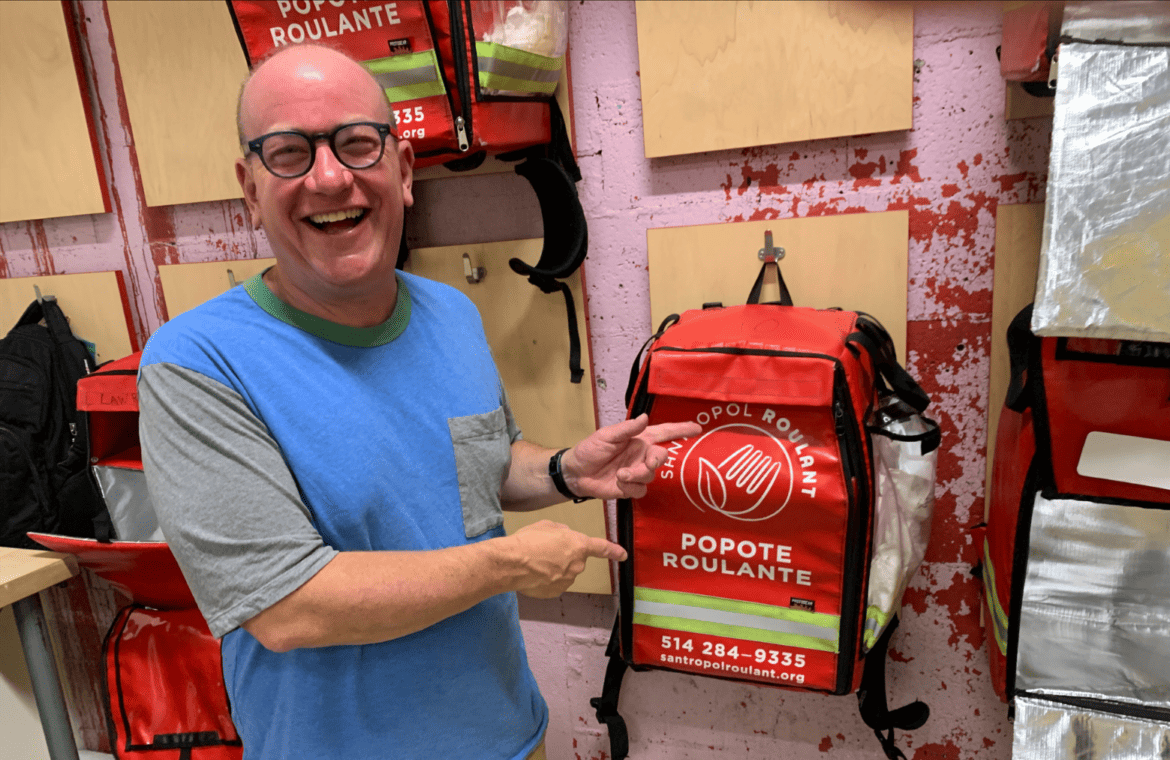Volunteering is tied to increased rates of belonging and inclusion, and our social services rely on volunteers to deliver their programs, but volunteering rates in Canada are dropping. Volunteer Canada is strategizing to address the challenges and calls for a National Action Strategy for Volunteerism.
Volunteers play a vital role in forging stronger communities, promoting a sense of meaning and belonging, and delivering a broad range of social, recreational, and community services. Volunteering, in many ways, serves as a safeguard for the support systems we rely upon.
Despite the ways volunteers enrich our daily lives, recent social and economic statistics paint a sobering trend. We are in the midst of a loneliness epidemic, and the negative effects are building – we are less healthy, less happy, more mistrustful of one another and our institutions, and ultimately less resilient. A related and equally concerning trend is our increasingly weathered and frail social safety net.
Volunteering helps address the loneliness epidemic and is the backbone of the social services millions of Canadians rely on.
Declining rates in volunteering are connected to both these trends.
Individuals who volunteer are more connected to their communities and have increased rates of belonging and inclusion, and our social services rely on volunteers to deliver their programs. Volunteering helps address the loneliness epidemic and is the backbone of the social services millions of Canadians rely on.

Being involved clearly matters, yet volunteering rates in Canada are dropping. Our collective sense of belonging and engagement as well as our social and economic well-being are at risk. In response, Volunteer Canada is identifying the root of the problem and co-creating strategies and activities to address the challenges.
We’re starting with looking back at the 2019 Special Senate Committee on Canada’s Charitable Sector recommendation to develop a National Action Strategy for Volunteerism. As part of a broader effort to modernize the charitable sector, the committee’s Catalyst for Change report recommended that the Canadian government “implement a national volunteer strategy to encourage volunteerism by all Canadians in their communities, recognizing that the needs of northern, rural and urban communities are unique.” Volunteer Canada was recommended to lead this work.
Being involved clearly matters, yet volunteering rates in Canada are dropping.
Fast forward to today, and increased demand on the non-profit sector, especially front-line services, coupled with decreasing volunteerism is testing our capacity to respond to growing social and economic challenges. For example, 35% of organizations in Ontario have had to cut services because of a lack of volunteers.
The good news is that we have a vibrant and increasingly diverse social and corporate sector ready and willing to respond. Along with the increase in diversity comes exposure to models of participation that offer unique opportunities for shared learning and increasing collective impact. Put simply, thanks to the growing contributions of Canada’s ethno-cultural communities, “traditional volunteering” is anything but traditional. Put it all together and our intention is to build a virtuous loop: support more people to volunteer (leading to better individual and collective health outcomes) and, in so doing, organizations will more fully deliver on their missions and our collective well-being. In this way, Canadians will be helping themselves, each other, and our institutions.
To achieve this goal, we need a pan-Canadian overview of how volunteering has changed since the pandemic, and if or how it has recovered.
Volunteer Canada is identifying the root of the problem and co-creating strategies and activities to address the challenges.
Put another way, it’s difficult to recover when we don’t know what has happened. With 58% of charities across Canada solely volunteer run,1 understanding the state of volunteering today is both increasingly urgent and extremely important.
While the story is incomplete, we are starting to get a sense from both qualitative and quantitative data:
- 62% of Ontario voluntary organizations reported losing volunteers during the pandemic, with the largest impact being felt by health, sports, and faith groups.2
- 50% of volunteer managers in Toronto were laid off or redeployed in 2020, and 90% of volunteer positions evaporated overnight.3
- 67% of volunteer organizations reported a shortage of volunteers in 2022, and 51% reported problems retaining volunteers.4
Our traditional model of volunteering has been hit by a major shock, one that has stressed and, in some cases, broken our ways of helping each other. As a society, we need to find ways to build back better, but first we need to recognize that the pandemic sped up changes that were already occurring in volunteering – namely, the loss and erosion of volunteer hubs and a mismatch between the often “rigid” supply of volunteering opportunities and the “demand” of volunteers for more open and flexible opportunities.
Data on the registration of new charities and the revocation of older mature groups suggests we are losing our traditional system of social supports.
Compounding the problem, data on the registration of new charities and the revocation of older mature groups suggests we are losing our traditional system of social supports.
Churches,5 service clubs, volunteer centres, and other key organizational building blocks of volunteering and fundraising are disappearing, and we have not created the structures to replace them. Many of these groups either do not have or can’t initiate succession plans. In order to keep their charitable status, charities must file an annual “public information return.” In the comments section, churches, auxiliaries, and similar groups have mentioned that the next generation of volunteers are not taking over, with many closing as a result.
Volunteering, charities, and non-profit groups are the glue that helps hold a community together. Working together creates a sense of community and is the way in which we care for each other. Through social interaction we not only meet our neighbours and their families; we gain a sense of the issues that affect our community. These groups and activities support a culture of belonging and inclusion – work that is increasingly needed as a loneliness epidemic takes hold.

The organizations that we created served their purpose. They were the way in which we came together to raise money, mentor or coach youth, lend a hand to those facing hard times. The pandemic changed that by short-circuiting our ability to come together. While time moved on, the ways that our communities addressed issues didn’t. For some groups, the hiatus was fatal: we are seeing the revocation of charities that could not survive more than two years of inaction.
For some groups, the pandemic hiatus was fatal: we are seeing the revocation of charities that could not survive more than two years of inaction.
We have seen that the charitable categories of community resource and public amenities groups are shrinking, with more revocations than new registrations. These groups include daycares; community hubs or resource centres; women’s groups; friendship centres and crime prevention; literacy groups; summer camps, especially for residents with special needs; parent organizations supporting schools and preschools; and all sorts of arts groups. The list is both long and large, and taken together these organizations are essential social infrastructure. Without them, our society starts to become untethered. If, for example, we are to have any chance at combatting the climate crisis, the ties that bind us together will need to be much stronger than they currently are. Volunteering and participation creates those ties and connections.
It’s time for a national conversation
We need research on the status of volunteering – what is working, what is failing, and what innovation and new models are needed. Our efforts must be especially mindful to include communities that are too often left behind.
We have seen how virtual volunteering helps Canadians connect with people in need. We should build on that, but screens don’t replace the need for face-to-face contact in helping people.
We need to look at ways to strengthen Canada’s volunteerism infrastructure and promote and amplify new shared visions of volunteering. We need nothing less than a National Action Strategy for Volunteerism. A co-created strategy will help us investigate what happened and what we want to do about it. If we don’t do anything, the situation will be even worse tomorrow. To find out more or to get involved, please visit volunteerstrategy.ca or email Chad Lubelsky at clubelsky@volunteer.ca.
1. Canada Helps, the 2023 Giving Report: It’s Time for Change, at page 29. (In fact, 58% of charities are solely run by volunteers.)
2. Ontario Nonprofit Network and Assemblée de la francophonie de l’Ontario, State of the Sector During Uncertain Times policy report, August 26, 2022, at page 9.
3. Volunteer Toronto, 2020–2021 Annual Report: Rising to the Occasion, “Impact Dashboard” section.
4. Statistics Canada, The Daily, November 25, 2022, “Canadian Survey on Business Conditions, fourth quarter.”
5. With the exception of Bahia places of worship, all other religions are increasing in number.


